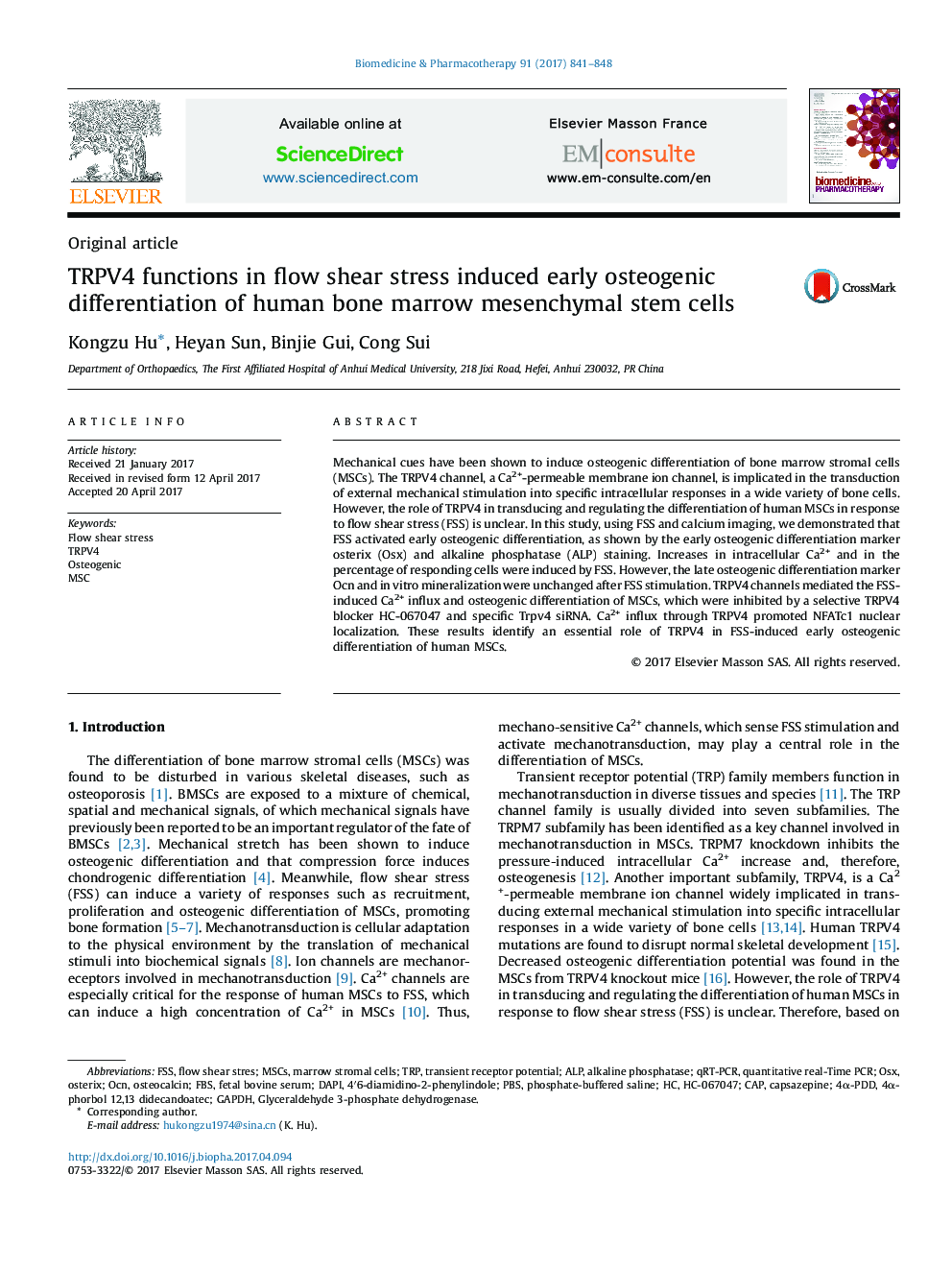| Article ID | Journal | Published Year | Pages | File Type |
|---|---|---|---|---|
| 5552994 | Biomedicine & Pharmacotherapy | 2017 | 8 Pages |
Mechanical cues have been shown to induce osteogenic differentiation of bone marrow stromal cells (MSCs). The TRPV4 channel, a Ca2+-permeable membrane ion channel, is implicated in the transduction of external mechanical stimulation into specific intracellular responses in a wide variety of bone cells. However, the role of TRPV4 in transducing and regulating the differentiation of human MSCs in response to flow shear stress (FSS) is unclear. In this study, using FSS and calcium imaging, we demonstrated that FSS activated early osteogenic differentiation, as shown by the early osteogenic differentiation marker osterix (Osx) and alkaline phosphatase (ALP) staining. Increases in intracellular Ca2+ and in the percentage of responding cells were induced by FSS. However, the late osteogenic differentiation marker Ocn and in vitro mineralization were unchanged after FSS stimulation. TRPV4 channels mediated the FSS-induced Ca2+ influx and osteogenic differentiation of MSCs, which were inhibited by a selective TRPV4 blocker HC-067047 and specific Trpv4 siRNA. Ca2+ influx through TRPV4 promoted NFATc1 nuclear localization. These results identify an essential role of TRPV4 in FSS-induced early osteogenic differentiation of human MSCs.
